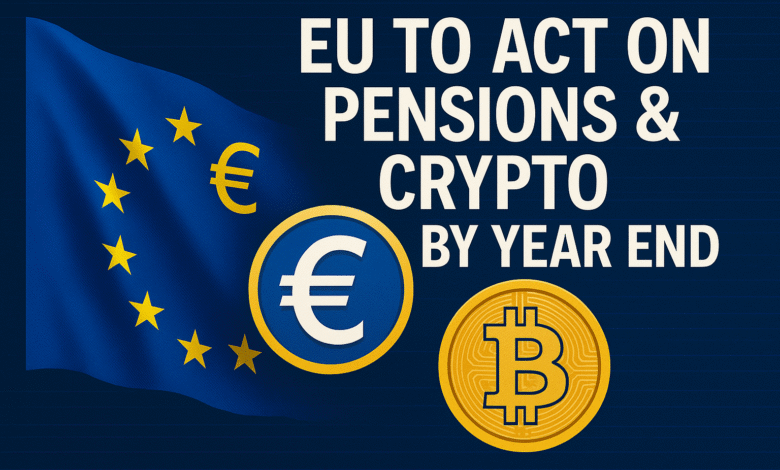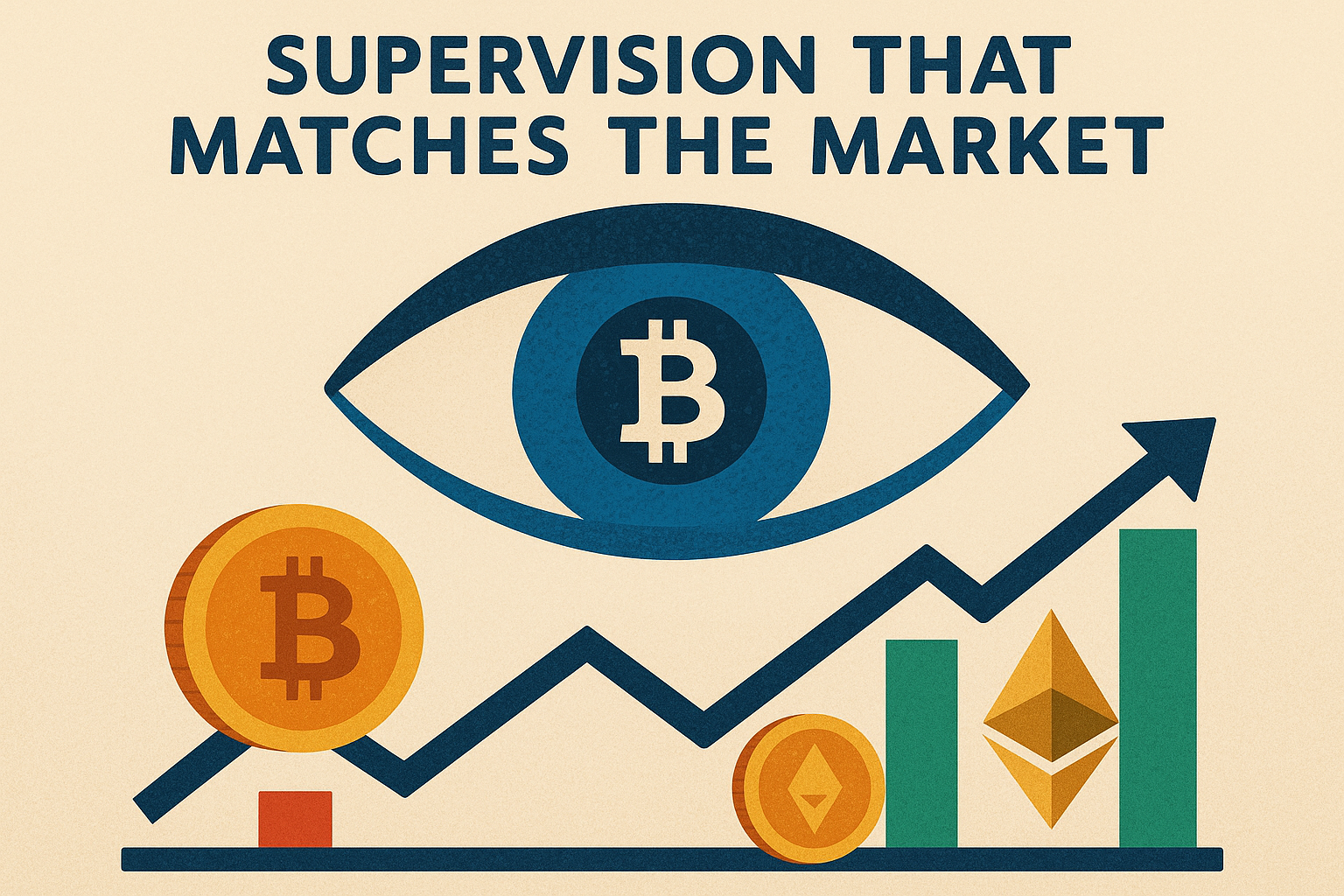EU to Act on Pensions & Crypto by Year End
The EU Commissioner signals decisive year-end moves on pensions and crypto, aiming to unlock savings and boost the Capital Markets Union.

The European Union has spent the past decade sketching blueprints for deeper capital markets, but 2025 feels different. In mid-September, the bloc’s new Commissioner for Financial Services and the Savings and Investments Union, Maria Luís Albuquerque, signalled a concrete push to deliver by year’s end on two politically sensitive files: boosting long-term pension saving and tightening the rules for crypto market supervision. The stated aim is straightforward—unlock household savings, channel them into productive investment, and hard-wire investor protection so that confidence grows alongside participation. Politically, it’s a bet that a visible win on pensions and crypto can jump-start a stalling Capital Markets Union, making Europe a more attractive place to list, raise, and manage money.
In public remarks around the Eurofi meetings and subsequent interviews, the EU Commissioner framed the year-end package as part of a broader “Savings and Investments Union,” an agenda that pairs retail-investor measures with more centralised market watchdog powers. Reporting indicates the Commission is exploring ways to expand occupational and personal pension coverage—potentially through auto-enrolment incentives and tax nudges—while also considering whether the Paris-based ESMA should take a more direct hand over certain crypto firms to reduce fragmentation across 27 national regimes. In other words, the Commission is connecting the dots between long-term saving, market plumbing, and digital-asset oversight.
A New Face Driving an Old Ambition
Personnel matters in Brussels. Maria Luís Albuquerque, a former Portuguese finance minister, now holds the financial-services brief and has been explicit about the cost of a fragmented single market—likening frictions to a de facto tariff on financial services that pushes activity abroad. Her mandate letter and early speeches emphasise completing the Capital Markets Union, deepening supervision, and making Europe’s rulebook more appealing so that European savings are invested at home. That context helps explain why pensions and crypto landed near the top of the year-end to-do list: they sit squarely at the intersection of household wealth, investor protection, and cross-border market efficiency.
Why Pensions Come First
EU to Act on Pensions: demographic math is unforgiving. As populations age and pay-as-you-go systems strain, policymakers want more citizens to build funded pension pots that, in turn, supply long-term capital to European companies and infrastructure. Multiple analyses underscore how underdeveloped retail participation is in several member states and how much untapped savings remain in low-yield accounts. A year-end pensions package, if it materialises, is therefore likely to focus on expanding coverage, simplifying products, cutting fees, and improving portability so workers can carry savings across borders as easily as they move jobs. The strategy is retail at heart but macro in impact: broader participation strengthens retirement security and deepens funding channels for growth.
An additional challenge is trust. To get households to shift from deposits to investment, the Commission needs a compelling consumer-protection story. That’s why the Retail Investment Strategy—originally tabled in 2023—matters in 2025. Expect the pensions push to be wrapped with clearer disclosures, conflict-of-interest curbs, and harmonised advice standards, so savers feel they can take prudent risk without getting lost in fine print. If delivered by year’s end, the interplay between stronger investor protection and easier market access could form the spine of a durable Capital Markets Union narrative.
The Crypto Piece: Supervision That Matches the Market
On crypto, the EU already broke ground with MiCA, but gaps remain in day-to-day oversight and cross-border enforcement. The emerging Commission line is to reduce fragmentation by giving supranational supervisors more teeth where activity is inherently pan-European—think large trading venues, custody providers, or systemically relevant stablecoin arrangements. Reports suggest one option under study is granting ESMA direct oversight of certain crypto entities, mirroring its role for critical market infrastructures in traditional finance. That would shorten enforcement lines and curb “jurisdiction shopping,” where firms plant their flag in the most lenient regime while serving the entire bloc.

Risk guardrails are tightening elsewhere, too. In March, the insurance and pensions watchdog EIOPA recommended a one-to-one capital charge for insurers’ crypto holdings—effectively a 100% requirement—citing extreme volatility and liquidity risks. While not the final word, the advice signals that prudential policy is converging on a conservative stance, even as the Commission weighs how to foster safe innovation. That dual track—strong prudence for balance-sheet exposures, targeted supervision for market actors—explains why crypto is being paired with pensions in a single year-end reform storyline.
What a Year-End Package Could Look Like
If the Commission hits its year-end mark, expect a visible, multi-pillar package. On pensions, that could mean a framework encouraging Member States to adopt auto-enrolment, portable plans, and fee transparency, alongside a renewed push to make the pan-European Personal Pension Product more usable. On crypto, look for proposals clarifying where ESMA leads versus national authorities, especially for high-impact platforms, and for calibrations that close arbitrage routes across borders.
The political economy is delicate. Pensions policy lives at the national level, and some capitals bristle at Brussels’ nudges. Crypto rules, meanwhile, must balance investor protection with the desire to keep innovative firms in the EU. Still, the Commission appears to be banking on momentum: after years of debate, businesses want scale, savers want returns, and policymakers want European listings to stop drifting to New York. A crisp year-end delivery would be a signal that the bloc can execute.
The Stakes for the Capital Markets Union
Europe’s economic challenge isn’t capital scarcity; it’s capital stuck in the wrong places. Trillions sit in bank deposits earning little, while equity risk-taking remains subdued. The Capital Markets Union aims to fix that by standardising rules, deepening risk-sharing, and building trust so households accept calibrated exposure to markets. Pensions are the bridge between micro and macro: when workers build funded pots, they become investors, their money flows to listed equities, bonds, and infrastructure, and companies gain a cheaper, deeper pool of financing. Pair that with a coherent crypto perimeter that keeps risk inside supervised walls, and you have the outlines of a more competitive, innovation-friendly market.
How This Touches Savers, Startups, and Institutions
For households, the promise is better retirement outcomes and clearer choices. If the pensions package delivers lower fees, portable plans, and higher quality advice, the risk-return trade-off becomes more approachable. For startups and scale-ups, a healthier Capital Markets Union means thicker venture and growth-equity pipes, more receptive public markets, and fewer incentives to redomicile or list abroad. For insurers, banks, and asset managers, Europe-wide rules reduce compliance fragmentation and make cross-border distribution more viable.
In crypto, stronger, more centralised supervision could lower compliance ambiguity for serious firms while squeezing out regulatory arbitrage. Over time, a level playing field should bring down the cost of capital for compliant providers and raise consumer confidence, which is essential if tokenised assets and distributed market infrastructure are to graduate from pilots to production.
The Politics of Delivery
None of this is automatic. Any year-end legislative push must thread EU institutional processes and secure buy-in from Member States that guard their pensions systems and supervisory prerogatives. National differences in tax, labour markets, and savings culture can slow common solutions. The Commission’s answer is to propose measures that offer optionality—frameworks that countries can adopt and adapt—while anchoring investor-protection standards and supervisory cooperation at the EU level. That is why empowering ESMA for select crypto use-cases is attractive: it targets genuinely cross-border risk without displacing national authorities everywhere.
What to Watch Between Now and Year-End
First, keep an eye on the formal publication of the pensions package that the EU Commissioner has trailed. Second, watch for specific language on ESMA’s role in crypto supervision and how that interfaces with MiCA. Third, monitor how prudential rulemaking evolves after EIOPA’s capital-charge advice; insurers’ voices will matter, but the direction of travel is clear. Finally, look for signs that the Commission is tying all of this into a single “Savings and Investments Union” message, emphasising growth, competitiveness, and resilience in European finance. If those pieces land on time, the year-end milestone will look less like a headline and more like the skeleton of an investable Europe.
Conclusion
Europe has been promising a deeper Capital Markets Union for years; the difference in 2025 is a credible path to delivery. With EU Commissioner Maria Luís Albuquerque setting a year-end clock on pensions and crypto, Brussels is pushing from aspiration to action. A successful package would widen funded pension coverage, make investment simpler and safer for retail savers, and clarify who polices what in the fast-moving crypto arena. That, in turn, could redirect dormant savings toward Europe’s real economy, improve market depth, and make the continent a more compelling home for innovative finance. The proof will arrive in the Official Journal, not the press release—but for now, the signal is unmistakable: Europe is preparing to move.
FAQs
Q: Who is the current EU Commissioner responsible for these reforms?
A: Maria Luís Albuquerque is the European Commissioner for Financial Services and the Savings and Investments Union, appointed in the current Commission cycle. She has prioritised pensions, investor protection, and market integration.
Q: What does “action by year end” actually mean?
A: In Brussels-speak, it typically means the Commission will table legislative proposals or policy packages before December 31. Those then go to the Parliament and Council for negotiation and adoption. Recent reporting points specifically to pension measures and enhanced crypto supervision proposals.
Q: How would stronger crypto oversight change things for firms?
A: Expect less fragmentation and potentially more direct ESMA supervision of certain cross-border crypto entities, complementing MiCA. That should cut regulatory arbitrage and boost consumer protection without stifling compliant innovation.
Q: Why pair pensions with crypto in one push?
A: They serve the same strategic story: build household wealth through funded pensions and ensure the platforms and products people use—including crypto—are well supervised. Together, they support a more investable, resilient Capital Markets Union.
Q: What prudential stance is the EU taking on institutional crypto exposure?
A: EIOPA has advised a conservative approach—proposing a 100% capital charge for insurers’ crypto holdings—reflecting volatility and liquidity risks. While advice must be transformed into law, it signals a high-caution baseline.
See More: Topnotch Crypto Unveils Zero-Threshold Mining App









